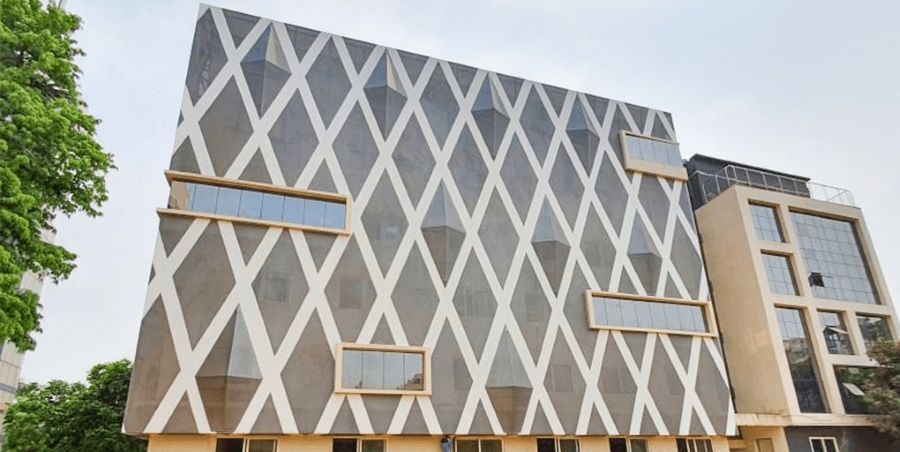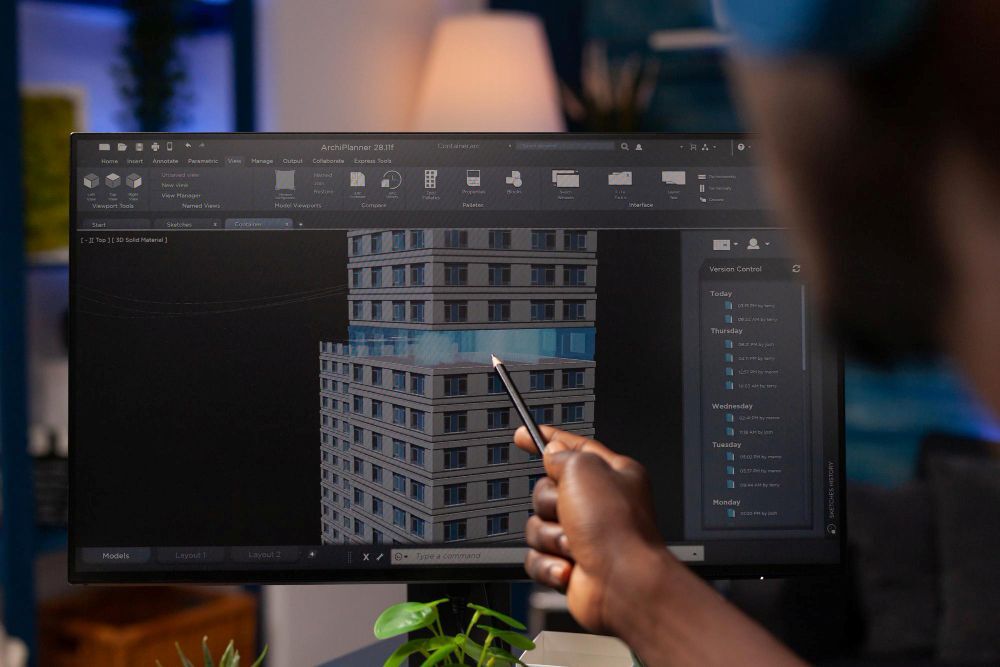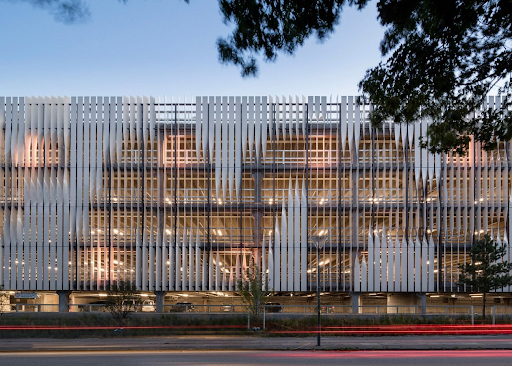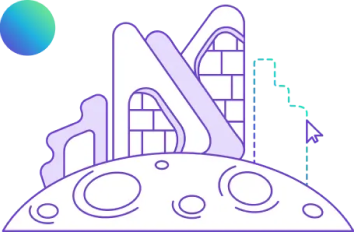Top 10 Facade Designer Interview Questions With Sample Answers

Table of Contents
The role of a facade designer has become increasingly vital as cities pursue sustainable, high-performance buildings. According to Mordor Intelligence, the U.S. facade systems market is expected to reach over USD 55 billion by 2030, driven by demand for energy-efficient and visually distinct structures. This growing demand has led to an increase in specialized roles, making it essential for professionals to prepare thoroughly with facade design interview questions and answers.
A facade designer’s interview usually evaluates both technical understanding and creative problem-solving. Candidates must demonstrate familiarity with performance criteria, material systems, and software workflows that support design and fabrication.
What Does a Facade Designer Do?
A facade designer bridges architecture, engineering, and construction. They are responsible for conceptualizing, detailing, and coordinating the building envelope, the exterior layer that protects against weather while defining aesthetic character.
Their core responsibilities include:
- Designing curtain walls, cladding systems, and shading devices
- Ensuring compliance with energy and fire-safety codes
- Integrating thermal and acoustic performance standards
- Collaborating across disciplines to resolve detailing challenges
- Utilizing digital modeling and computational tools such as Dynamo for Revit for efficiency and accuracy
A facade designer harmonizes visual ambition with performance, ensuring the building envelope controls heat, moisture, wind, and daylight without compromising buildability or maintenance.
10 Facade Designer Interview Questions With Sample Answers
1. What is the primary goal of facade design?
When asked what is facade design and its primary goal, a strong answer emphasizes the roles and how design decisions balance energy efficiency with material expression and occupant comfort.
Sample Answer: It is the integrated process of creating an exterior envelope that controls water, air, heat, and light while supporting the architect’s intent. Success is measured by performance, durability, and maintainability as much as by appearance.
2. What are the educational requirements for facade design roles?
Employers generally expect candidates to hold a degree in architecture, structural engineering, or building technology. Many professionals also pursue certifications in building envelopes or advanced 3D modeling.
Sample Answer: Because facade work crosses disciplines, the educational requirements for facade design roles usually include a bachelor’s degree in architecture or engineering, plus hands-on studio or on-site experience. Short courses in envelope performance, detailing, or fabrication are valuable supplements.
3. Which software tools are most valuable in facade design?
Strong digital skills can set candidates apart. Employers often look for proficiency in Revit, Rhino, Grasshopper, and BIM-based coordination tools.
Sample Answer: My software skills for facade design include using Revit for BIM documentation, Rhino and Grasshopper for complex geometry, and analysis plugins for environmental testing. I also use Dynamo for Revit to automate panel schedules and data extraction, which reduces errors and speeds coordination.
4. What are the criteria for facade design that you always consider?
Facade performance depends on structural stability, weather protection, thermal insulation, and maintenance accessibility.
Sample Answer: Thermal performance, air and water tightness, structural behavior, constructability, maintainability, and visual quality. I then prioritize those criteria against project goals and climatic conditions to make informed trade-offs.
5. Describe a challenging project and how you approached it.
Interviewers seek real examples that show technical thinking and problem-solving.
Sample Answer: In a coastal high-rise project, we faced excessive wind-load deflection on curtain-wall modules. I worked with the structural engineer to revise mullion sections, adjusted anchor details, and used iterative checks to confirm performance without compromising the facade rhythm.
6. How do you balance aesthetics with performance in facade design?
This question tests your ability to reconcile creative vision with engineering realities.
Sample Answer: “I begin with the architectural intent, then test assemblies for thermal and moisture behavior. If performance metrics fall short, I explore material or detail adjustments that preserve the visual concept, often using parametric studies to find the best compromise.”
7. How do you ensure your facade designs comply with safety codes and sustainability goals?
A strong response references codes like ASHRAE or IECC and sustainable practices such as daylight optimization or recyclable materials.
Sample Answer: I design to relevant codes, energy standards, fire performance, and local structural requirements, and include lifecycle or whole-building impact checks where possible. Specifying robust testing and clear performance criteria in submittals keeps both safety and sustainability on track.
8. How do you handle coordination between facade and structural systems?
Facade design requires constant collaboration between architects, engineers, and contractors.
Sample Answer: “I keep a shared BIM model and schedule regular coordination meetings. Early identification of slab edges, anchor locations, and MEP penetrations reduces field conflicts and can save time during fabrication.”
9. How do digital tools enhance facade workflows?
Candidates who can articulate the link between technology and design efficiency stand out.
Sample Answer: “Parametric tools let me test multiple layout options quickly; scripts free the team from repetitive checks, and integration with analysis software allows early performance feedback. That combination improves design confidence and reduces costly revisions.”
10. Where do you see the future of facade design heading?
Employers look for awareness of emerging technologies and trends.
Sample Answer: “Expect wider use of adaptive systems, integrated photovoltaics, and tighter design-to-fabrication workflows. The continued adoption of digital tools will push facades toward more data-informed, performance-driven solutions.”
5 Expert Tips to Ace Your Interview
These strategies helps you answer clearly and demonstrate results:
1. Present a strong portfolio: Showcase projects that demonstrate technical depth and creativity. Include thermal modeling, detailing, and parametric explorations. If you’re unsure about the educational requirements for facade design roles to highlight, emphasize studio work and specific envelope projects.
2. Strengthen software knowledge: Many firms value familiarity with specialized digital platforms. Emphasize concrete examples of how your software skills for facade design produced outcomes. Demonstrable Grasshopper or Dynamo scripts are useful talking points.
3. Prepare for cross-disciplinary discussions: Interviewers may ask about coordination with mechanical and structural teams. Explain how you communicate design intents and resolve interface conflicts early in the process.
4. Stay informed about innovations: Read about evolving materials and performance strategies. Emerging facade technologies like kinetic systems and responsive envelopes are increasingly part of project discussions.
5. Quantify your results: Whenever possible, support your answers with measurable outcomes, energy savings, material reductions, or improved daylighting performance.
Conclusion
A successful facade interview combines clear examples, measurable outcomes, and evidence of collaborative problem-solving. Good preparation backed by a focused portfolio and practical software experience will make your interview answers believable and memorable.
For professionals aiming to strengthen their technical and computational design capabilities, the Master Computational Design by Novatr offers an industry-aligned pathway to advance skills in digital modeling, facade workflows, and automation.
Visit our resource page to learn more about how the program helps designers stay ahead in the evolving world of facade innovation.

 Thanks for connecting!
Thanks for connecting!
.jpg)

.png)





